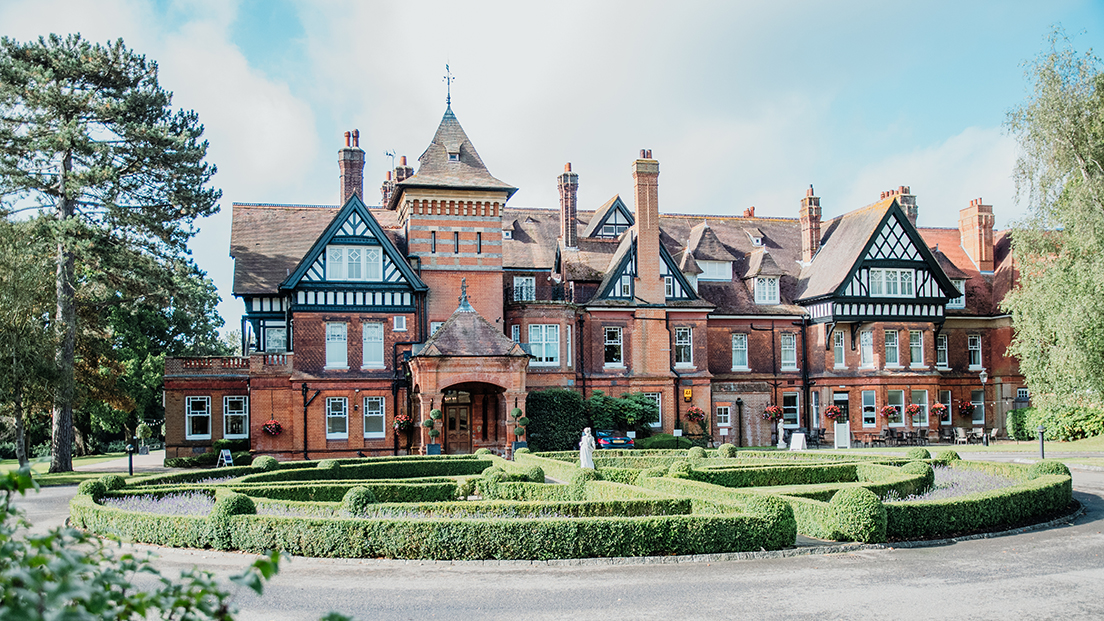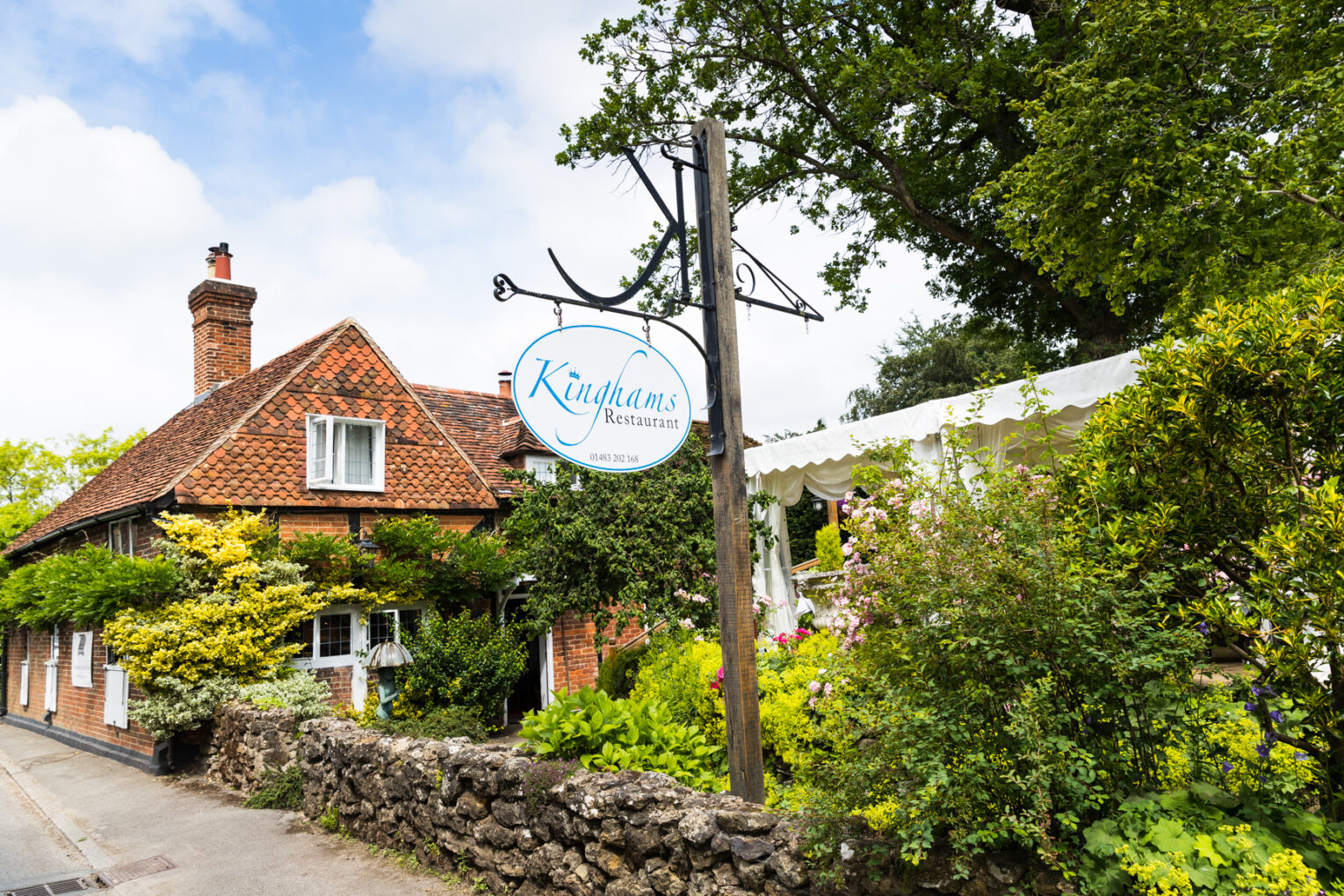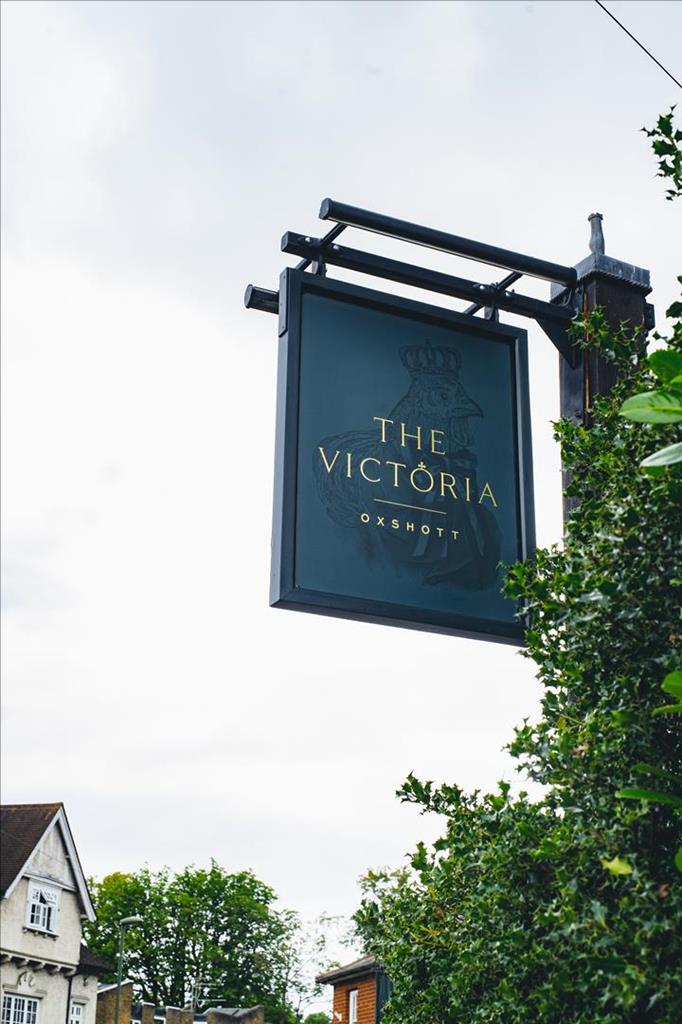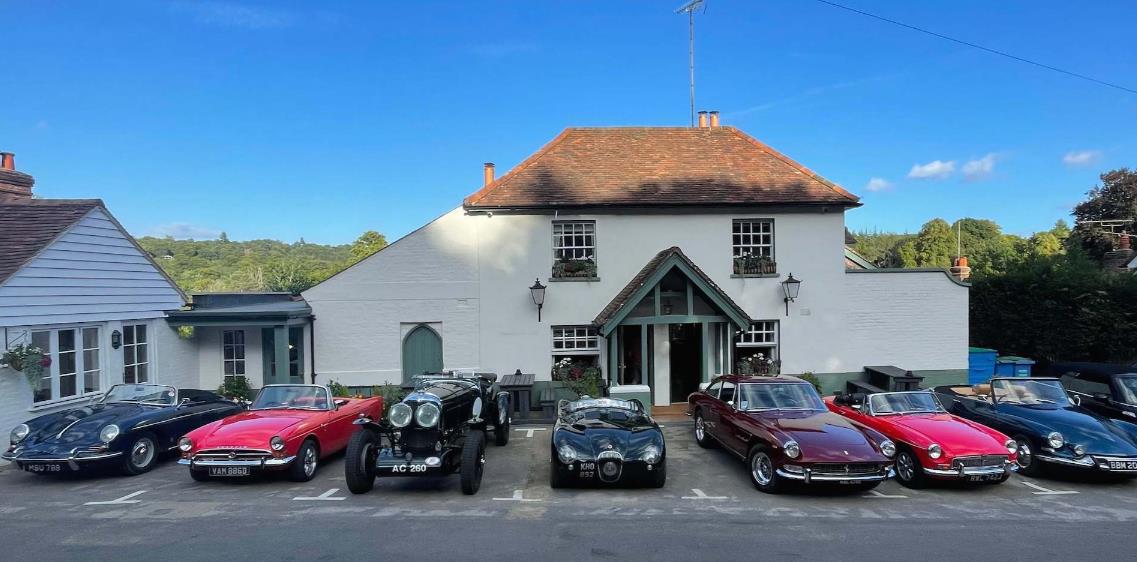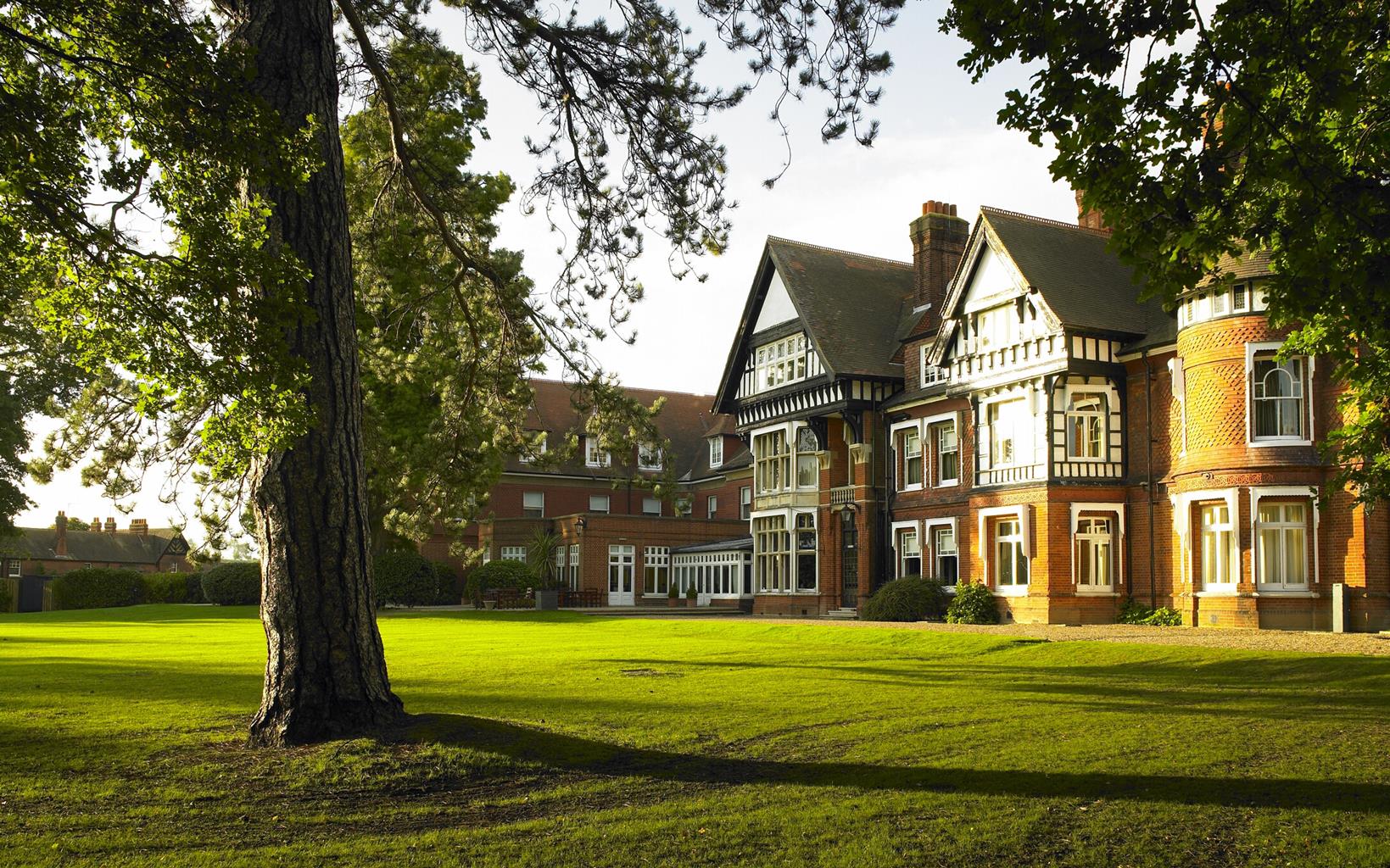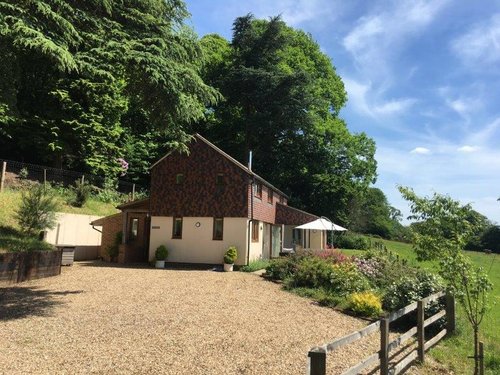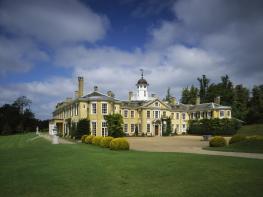Tucked away in a tranquil village in the Surrey Hills, The Kings Head offers three very comfy…
A stroll around Dorking

2.9 miles (4.7kms)
About the walk
Nestling in the Surrey Hills, a stone’s throw from Box Hill, you’ll find the historic and attractive market town of Dorking. Progress has happened here, but it has happened sympathetically. Old architecture blends with the new, while behind the busy shopping streets the peaceful river threads its way quietly through the town. A few minutes walk away lies Cotmandene, a wide, open area with views of Box Hill and the North Downs. Cottagers once grazed their animals here, and local people still exercise their right to dry washing on a cluster of metal poles on the green. It is claimed that one of the first cricket matches in England took place here.
Founded as a staging post on Stane Street, the Roman road between London and Chichester, Dorking later appeared as the Manor of Dorchinges in the Domesday Book; its assets were listed as ‘one church, three mills worth 15s 4d, 16 ploughs, 3 acres [1.2ha] of meadow, woodland, and herbage for 88 hogs’. Subsequent lords of the manor included the Dukes of Norfolk, who lived in Dorking until they moved to Arundel – one of them is buried in Dorking churchyard. Surrounded by fertile farmland, the town quickly established itself as a prosperous agricultural and market town. The town’s posterity was assured with the construction of a turnpike road in 1750, which made Dorking a staging post on the route to Brighton. The addition of a London railway line in 1867 gave rise to the abundance of well-proportioned Victorian and Edwardian buildings that you’ll see around the town.
Long noted for its beauty and history, Dorking has attracted a number of esteemed writers, artists and poets. Jane Austen was a regular visitor to the area and used Box Hill as a backdrop for one of the pivotal scenes in Emma, while Charles Dickens is generally reckoned to have used the local coachman William Broad as the model for a character in The Pickwick Papers. Composer Ralph Vaughan Williams (1872–1958) spent much of his childhood in the area and you’ll find a sculpture of him outside Dorking Halls at the start of the walk.
Walk directions
From the car park turn left along Reigate Road, pass the Dorking Halls and turn left into Moores Road. Walk to the end of Moores Road, as you reach the large expanse of common land known as Cotmandene you’ll see the Victorian almshouses, on your right. Walk ahead to the trees and bear right following the edge of the green to reach Chart Lane.
Turn left and follow the pavement as far as the A24, then carefully cross Chart Lane and bear right into Glory Wood, using the signed footpath off the verge. As the footpath climbs away from the road, steer as right as you can, keeping the edge of the wood in view on your right. Leave the woods at the barrier near an information board and fork right. There’s a bench here, and a fine view towards Ranmore Church spire in the woods on the horizon. Drop down past the allotments and then St Paul’s Primary School, cross St Paul’s Road, and dive down the little fenced footpath opposite. Keep straight on into Chequers Place; then, after 70yds (64m), turn off down a narrow alley on your left, signed Rose Hill.
Emerge in Rose Hill – almost as pretty as its name – and turn right to walk down beside the green, and then out into South Street through the mock-Tudor Rose Hill Arch at the foot of the hill. On your right is The Bull’s Head. Turn left and walk round to the war memorial opposite Waitrose. Just to the left of the memorial you’ll see the little blue door at the entrance to Dorking Caves (open Easter to end of October). Cross at the traffic lights and turn left and then right into Junction Road.
At the bottom, turn right into West Street, pass Dorking Museum, and continue into the High Street. If you wander left down the alley next to Barclays Bank you’ll find St Martin’s Church, designed by Henry Woodyer and completed in 1877. The flintwork alone is worth a look. Inside, it positively oozes with high Victorian art. Further up the High Street, pass St Martin’s Walk shopping precinct, and a few paces further on turn left down Mill Lane.
Fork right at the bottom towards the Meadowbank Recreation Ground, then turn right again beside the brook. Keep the lake on your left and follow the path to the head of the lake, then over a bridge onto a path leading to London Road. Turn left; then, after 100yds (91m), turn right up the signed footpath and follow the drive as it winds up past the Council Offices, back to Reigate Road. Cross over, back to the car park.
Additional information
Mainly paved streets, with easy section of woodland paths
Woodland scenery, parkland and busy town centre
Not what most dogs think of as a great day out
OS Explorer 146 Dorking, Box Hill & Reigate
Reigate Road pay-and-display car park (near Dorking Sports Centre)
South Street or behind St Martins Walk precinct
WALKING IN SAFETY
Read our tips to look after yourself and the environment when following this walk.
Find out more
Also in the area
About the area
Discover Surrey
Surrey may be better known for its suburbia than its scenery, but the image is unjust. Over a quarter of the county’s landscapes are official Areas of Outstanding Natural Beauty, and along the downs and the greensand ridge you can gaze to distant horizons with hardly a building in sight. This is one of England’s most wooded counties, and has more village greens than any other shire. You’ll find sandy tracks and cottage gardens, folded hillsides and welcoming village inns. There’s variety, too, as the fields and meadows of the east give way to the wooded downs and valleys west of the River Mole.
Of course there are also large built-up areas, mainly within and around the M25; but even here you can still find appealing visits and days out. On the fringe of Greater London you can picnic in Chaldon’s hay meadows, explore the wide open downs at Epsom, or drift idly beside the broad reaches of the stately River Thames. Deep in the Surrey countryside you’ll discover the Romans at Farley Heath, and mingle with the monks at England’s first Cistercian monastery. You’ll see buildings by great architects like Edwin Lutyens and Sir George Gilbert Scott, and meet authors too, from John Donne to Agatha Christie.
Nearby stays
Restaurants and Pubs
Nearby experiences
Recommended things to do
Why choose Rated Trips?
Your trusted guide to rated places across the UK
The best coverage
Discover more than 15,000 professionally rated places to stay, eat and visit from across the UK and Ireland.
Quality assured
Choose a place to stay safe in the knowledge that it has been expertly assessed by trained assessors.
Plan your next trip
Search by location or the type of place you're visiting to find your next ideal holiday experience.
Travel inspiration
Read our articles, city guides and recommended things to do for inspiration. We're here to help you explore the UK.



